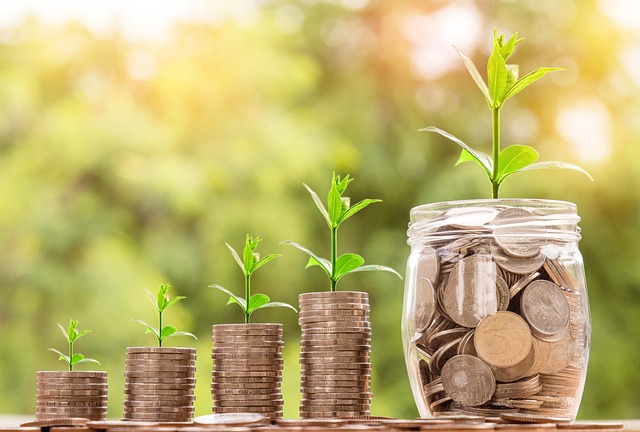

Aligning Investments With Personal Values
Because making money shouldn't mean compromising your principles - a practical guide to values-based investing
Let's be honest - most of us never really think about where our investment dollars actually go. We chase returns, follow hot tips, and pray our 401(k) doesn't tank before retirement. But what if I told you there's a way to grow your wealth without funding companies that keep you up at night? (We've all got those, right?)
Values-based investing isn't some hippie-dippie fantasy - it's a $35 trillion global movement as of 2023. And no, you don't have to sacrifice returns. In fact, 64% of sustainable funds outperformed their traditional peers over the past 5 years. Surprised?
The Nuts and Bolts of Values-Based Investing
First things first - this isn't about being perfect. It's about being intentional. Like when you start paying attention to food labels, but for your portfolio. The process typically involves three steps:
1. The "Hell No" List: Start by identifying industries you absolutely won't support. Fossil fuels? Private prisons? Tobacco? For me, it was always weapons manufacturers - just couldn't stomach profiting from conflict.
2. The "Heck Yes" Criteria: Now the fun part! What causes make your heart sing? Clean energy? Gender equality? Sustainable agriculture? My friend Sarah allocates 15% of her portfolio exclusively to women-led startups. Talk about putting your money where your mouth is!
3. The "Meh, Okay" Middle Ground: Let's be real - few companies are saints. The key is setting your personal threshold. Maybe you'll tolerate a tech company that's 80% clean but still uses some non-renewable energy. Perfection is the enemy of progress, after all.
Now here's where most people get stuck - actually finding these investments. You've got options:
- ESG Funds: Pre-screened portfolios focusing on Environmental, Social and Governance factors (average expense ratio: 0.25-0.50%)
- Impact Investments: Direct funding to specific projects (think: $5,000 into a local solar co-op)
- DIY Stock Picking: Time-consuming but ultra-customizable (I spent 3 months building my "perfect" portfolio... only to rebalance it quarterly)
Real People, Real Portfolios
Case Study #1: The Climate Warrior
Meet Javier, a 34-year-old teacher with $45,000 to invest. After seeing his hometown flooded for the third time, he went all-in on climate solutions:
- 50% in a clean energy ETF (up 22% in 18 months)
- 30% in green bonds financing wind farms
- 20% in a water conservation startup (risky but passionate)
"It's not just about returns," he told me. "Every quarterly statement feels like a progress report on saving the planet." Powerful stuff.
Case Study #2: The Social Justice Investor
Then there's Priya, who screens every investment through a racial equity lens. Her rules:
- No companies with less than 30% BIPOC board representation
- 5% annual allocation to minority-owned community banks
- Regular shareholder activism (she helped pass a pay equity resolution last year)
Her portfolio's averaged 7.2% returns over 3 years - proving conscience and capitalism can coexist.
Case Study #3: The Faith-Based Approach
Pastor Mike's congregation pooled $200,000 into investments aligning with their religious values:
- Avoiding alcohol/gambling stocks (saved them from recent casino stock crashes)
- Supporting affordable housing REITs (generating 5.8% dividends and homes)
- Microfinance loans through their denominational investment arm
They've outperformed their previous generic mutual fund by 1.3% annually. Divine intervention? Maybe just good due diligence.
My Personal Investing Journey
I'll never forget my "aha" moment. There I was, celebrating my Tesla stock gains... until I realized my index fund also held ExxonMobil. Talk about cognitive dissonance!
So I dove down the rabbit hole:
- Year 1: Transferred my $18,000 IRA to an ESG target-date fund (easy button)
- Year 3: Started direct investing in women's health companies (5 positions totaling $7,500)
- Now: 60% ESG funds, 25% impact investments, 15% "legacy" holdings I'm gradually phasing out
The craziest part? My returns actually improved after switching strategies. Coincidence? Maybe. But I sleep way better at night.
Pro Tip: Don't try to overhaul everything overnight. I started by redirecting just 10% of my investments - enough to dip my toes without panic-selling during market dips.
Your Turn: Let's Get Practical
Ready to align your investments with your values? Here's a quick action plan:
- Audit Your Current Holdings: Tools like AsYouSow.org show what's hiding in your funds (prepare for surprises)
- Pick One Focus Area: Climate? Racial justice? Animal welfare? You can't solve everything at once
- Start Small: Even $100 in a values-aligned ETF makes a difference
And because I love playing financial therapist, let's do a quick gut check:
What's one company you'd feel proud to own? (Mine's
Patagonia -
those guys walk the talk)
What industry makes you cringe when you see it in your
portfolio? (For me,
it was defense contractors)
If money were no object, what cause would you fund? (Don't
overthink this -
your first answer is usually the right one)
See? You're already halfway there. The beautiful thing about values-based investing is that it transforms dry financial decisions into extensions of your identity. Your portfolio becomes a story about who you are and what you stand for.
Reality Check: You will occasionally sacrifice some returns. Some unethical companies print money (looking at you, Big Pharma). But ask yourself - at what cost? Most of us can afford to give up 0.5% returns to avoid compromising our integrity.
At the end of the day, this isn't just about money. It's about legacy. Twenty years from now, do you want to explain to your grandkids how you got rich off oil spills and sweatshops? Or how your investments helped build a better world?
Yeah. Thought so.

